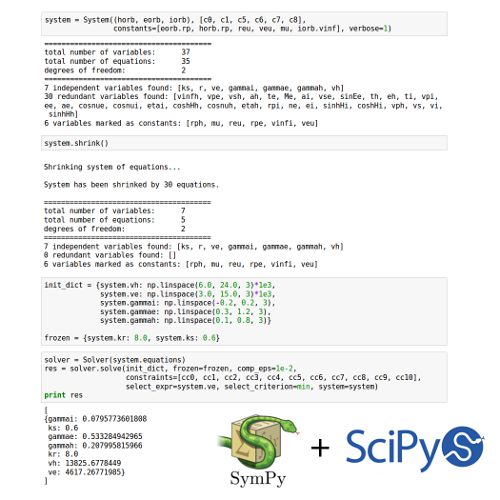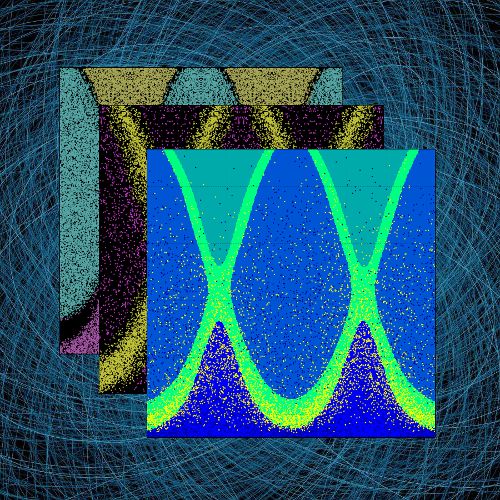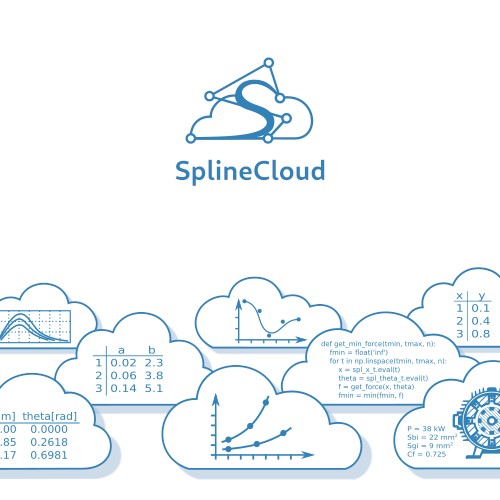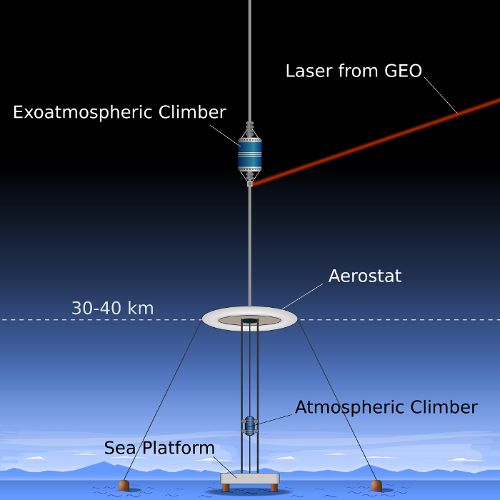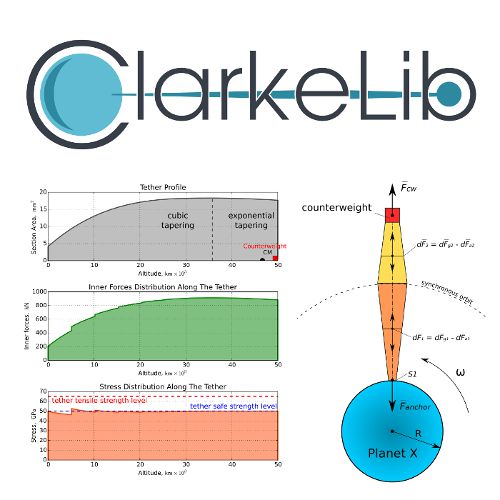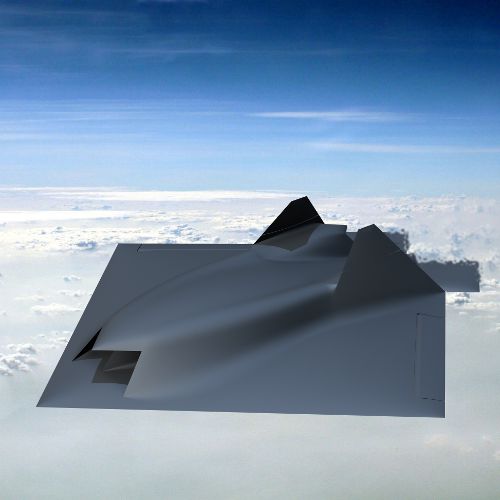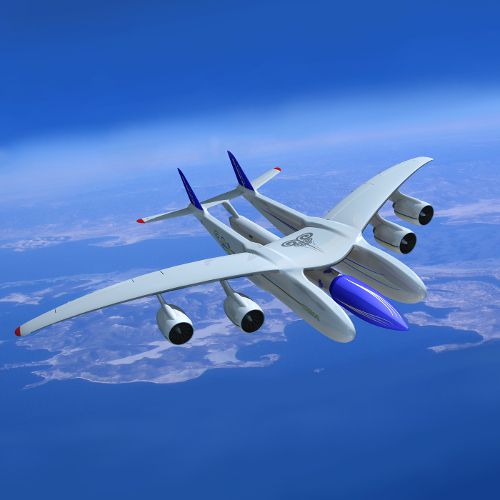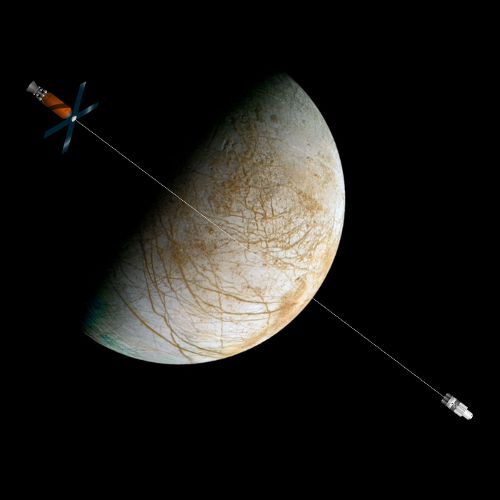
I'm an aerospace engineer with a background in mechanical engineering, software development, scientific programming and data analysis
The list of my latest works includes: conceptual design of a landing mission to Europa (one of Jupiter's icy moons) with application of a momentum exchange tether, prediction of orbital parameters for undiscovered potentially hazardous asteroids, alternative design solutions for the space elevator components and a few other.
Blog Posts
Research
My research activity covers a vast range of topics. My first thorough research dealt with development of a method and a corresponding algorithm for computation of the microwave scattering characteristics of electrically large objects with arbitrary shape and surface materials. The developed asymptotic method is based on the approach of physical optics, complemented with the concept of edge currents (Ufimtsev’s physical theory of diffraction). Since 2014 I have been leading a design research of Space Elevator and its systems at Yuzhnoye SDO (Ukraine). This work helped me to become a member of the IAA Study Group “Road to Space Elevator Era”. Participation in NASA Space Apps Challenge 2016 has given me a unique opportunity to apply my skills in the area of machine learning and initiate a research devoted to the prediction of orbital parameters for undiscovered potentially hazardous asteroids. My most recent endeavor is related to the conceptual design of a future landing mission to Europa (icy moon of Jupiter) with application of momentum exchange tether. Results of this study will be presented at IAC 2017.
In addition to the space-related studies I’m interested in design and engineering automation and knowledge management, including generative design and knowledge-based engineering. These interests pushed me towards initiating two projects: IcySplines (data fitting with splines) and CoreSolution (construction, simplification and solving nonlinear systems of equations).
Publications
2018
Prediction of Orbital Parameters for Undiscovered Potentially Hazardous Asteroids Using Machine Learning
Proceedings of Stardust Final Conference: Advances in Asteroids and Space Debris Engineering and Science, Astrophysics and Space Science Proceedings 52
The purpose of this study is to make a prediction of combinations of orbital parameters for yet undiscovered potentially hazardous asteroids (PHAs) with the use of machine learning algorithms. The proposed approach aims at outlining subgroups of all major groups of near-Earth asteroids (NEAs) with high concentration of PHAs in them. The approach is designed to obtain meaningful results and easy-understandable boundaries of the PHA subgroups in 2- and 3-dimensional subspaces of orbital parameters. Boundaries of these PHA subgroups were found mainly by the use of Support Vector Machines algorithm with RBF kernel. Additional datasets of virtual asteroids were generated to handle sufficient amount of training and test data, as well as to emulate undiscovered asteroids. This synthetic data helped in revealing ‘XX’-shaped region with high concentration of PHAs in the (ω, q) plane. Boundaries of this region were used to split all NEAs into several domains. For each domain the subgroups of PHAs were outlined in different subspaces of orbital parameters. Extracted subgroups have high PHA purity (~90%) and contain ~90% of all real and virtual PHAs. Obtained results can be useful for planning future PHA discovery surveys or asteroid-hunting space missions.
Full paper (preprint)2017
EDEM - Europa Direct Encounter Mission. Possible scenario of an ultra-strong momentum exchange tether application for a future landing mission to Europa
Proceedings of 68th International Astronautical Congress
In recent years, Jupiter’s moon Europa has taken a leading position in the chart of search for extraterrestrial life in the Solar System. This is dictated by the suggestion that a giant salt water ocean exists beneath the ice crust of Europa. The thickness of the ice crust is estimated in the range of 3…30 km and will be determined in the frame of the upcoming NASA’s Europa flyby mission. Despite the fact that these data will become available not earlier than in the late 2020s, the studies towards Europa landing and ice-penetration mission concepts have already begun. Considering the significant time gap between the upcoming orbiting and future landing missions, the latter one should be developed with respect to the evolving technologies that will become mature by the end of the next decade. The application of these technologies can increase ice-penetration probability and decrease the time needed for a robotic probe to pierce the ice crust and reach the mysterious under-ice ocean of Europa.
The current paper is devoted to the concept of a landing mission to Europa with optional kinetic ice-penetration capabilities. The mission concept is based on the application of an ultra-strong momentum exchange tether that is used for efficient deceleration of the Europa landing module and acceleration of the ice-penetration assets. The long-lasting angular acceleration of the tethered spacecraft is provided by a pair of electric thrusters. Optimal scheme of tether release at the approach to Europa is examined. It produces low landing delta-v and very high impact velocity (30…40 km/s) of the ice-penetration assets. The impact energy is sufficient to form a deep tunnel in ice and thus reduce the working path of the drilling or ice-melting equipment that will be delivered to the impact site by the landing module. The advantages and complications of the proposed mission concept are depicted in the paper along with a list of technologies that have to be advanced during the next decade in order to increase feasibility of the proposed mission and other ambitious projects of space exploration.
An assessment of the technological feasibility of applying GEO-based solar pumped lasers for feeding the Space Elevator exoatmospheric climber
Proceedings of 68th International Astronautical Congress
While the era of Space Elevator is slowly approaching the main aspects of its design and operations remain uncertain. One of the key problems that has been addressed in many studies but hasn't found any solidified solution is the space elevator climber feeding scheme. The original idea of Dr. Edwards to use a powerful ground- or sea-based laser meets several serious problems connected with: continuous operation of the high-energy laser in all weather conditions, over-flight of aircraft and spacecraft, pointing stability, etc. A different approach of using solar panels tethered to the climber has been proposed by the IAA but has its own weak sides: a huge required area of solar arrays, which leads to technological problems with maintenance and replacement of panels and the need to pack them inside an aerodynamic dome while moving in the atmosphere; the night time climber layup; restrictions on operational overloads, etc.
The current paper is devoted to the alternative concept of using GEO-based solar pumped lasers for feeding space elevator climber at its exoatmospheric phase. The solar pumped laser can concentrate solar energy from a large area into a thin laser beam with high efficiency of more than 40%. The energy from laser beam can be converted to mechanical or electrical energy by the Stirling engine with efficiency close to 30%. These two technologies can be used to build simple and robust system of feeding the space elevator climber.
The main advantage of the proposed solution is in reduction of the climber’s size and complexity. The paper contains estimations of basic parameters of the solar pumped laser feeding system for the 20-ton climber addressed in the IAA study. Advantages and complications of the proposed scheme are depicted along with the estimation of its feasibility.
2015
Space Elevator. Alternative Design Solutions
Proceedings of the 66th International Astronautical Congress
Nowadays, all prerequisites exist to assume that construction of space elevator is realizable in the near future. Meanwhile, no technologically mature way of the strength-sufficient material production has been achieved, but it only gives humanity more time for the conceptual research in other areas of space elevator design. This paper tries to embrace several main issues, connected with space elevator design, operation and maintenance. A range of possible solutions to these issues is proposed. Amongst them: tether length decrease by the means of the counterweight mass increase using space debris, tether tapering optimization, electric powering of climbers in atmosphere and powerbeaming in space, High Stage One alternatives.
Full paperOpen library for space elevator design and engineering. Analyses of tether tapering functions
Open Science Framework
Tapering of a space elevator’s tether from the planet surface to the altitude of the synchronous orbit and further to the counterweight altitude can reduce the mass of the whole system, as well as provide more or less even distribution of stress along the tether rather than in the case of using uniform tether. This document presents the analyses of some tether tapering functions and shows that exponentially tapered tether is not an optimal solution for the space elevator with climbers or other point loads like transitional stations. To handle these analyses ClarkeLib – an open library for calculation of basic space elevator parameters and loads has been developed. Estimation of Earth Elevator and Mars Elevator parameters has been made using this library, and results are represented in this paper.
Full paper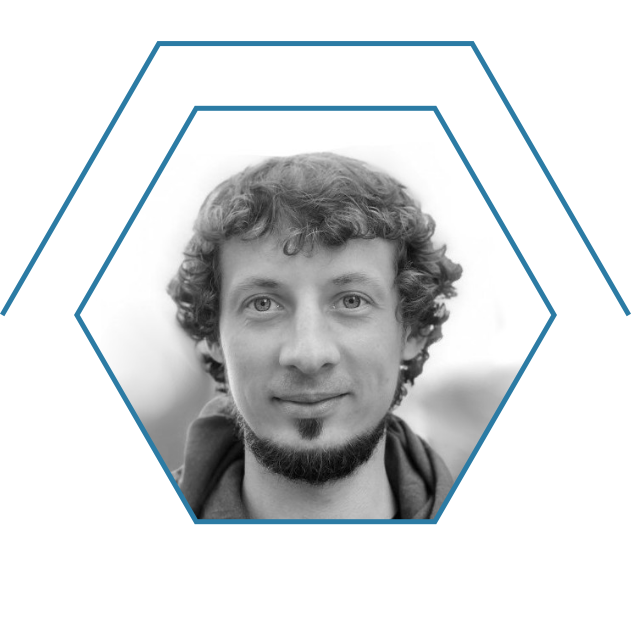
Profile
I was born in July 1986 in Kirovograd, a city located in the center of Ukraine. Since my childhood I have been passionate about astronomy, space exploration and future technologies. For these reasons I took advanced classes in physics and astronomy at school and decided to enter National Aerospace University in Kharkiv. While studying at the Faculty of Rocket and Space Systems and consolidating knowledge in design of machines and mechanisms, mechanics of materials, aerodynamics and other engineering subjects I developed skills in computer graphics and computer simulations and became proficient with a range of engineering software. Classes in computer science, optimization, numerical methods and mathematical modeling increased my interest in programming and software development. After the graduation I obtained a position in Yuzhnoye State Design Office in the Spacecraft & Space Launch Systems Design Division. My work at Yuzhnoye has always been connected to research and programming, which has stimulated me to continuously develop new skills.
CAREER
| Lead Research Engineer | 2009 - present |
Spacecraft & Space Launch Systems Design Division, Yuzhnoye State Design Office, Dnipro, Ukraine
Starting from 2010 for several years I've been working on the development of a microwave scattering simulation software. I have developed an algorithm that is based on the approach of physical optics, complemented with physical theory of diffraction concepts. I used this algorithm in development of integrated software with multiprocessing computation capabilities and rich graphical user interface. I was involved in several conceptual and preliminary design projects related to the development of spacecraft and space launch systems. Since 2013 I have been involved in the development of passive systems for space debris removal. I have been selected to participate in the International project LEOSWEEP (Low Earth Orbit Security With Enhanced Electric Propulsion) - active space debris removal system. The project was funded under the European Seventh Framework Program (FP7). In 2014 I was assigned to lead the space elevator research direction. This research pushed me towards the: development of ClarkeLib – an open library for Space Elevator parameters computation, participation in IAC 2015, and becoming a member of the IAA Study Group “Road to Space Elevator Era”. Currently I’m involved in the conceptual design of a scientific and industrial Moon base at Yuzhnoye SDO.
EXPERIENCES
| Member of Judging Panel | April 2017 |
Local host of NASA Space Apps Challenge international hackathon in Kropyvnytskyi, Ukraine
| Team Lead | May 2016 |
Spacer Hackathon, Dnipro, Ukraine
| Team Lead | April 2016 |
NASA Space Apps Challenge, Kirovograd, Ukraine
| Technical Team Lead | July 2015 |
Copernicus Space Science Laboratory, Chateau Bercel, Budapest, Hungary
| Engineer | 2013 - 2016 |
International project Low Earth Orbit Security With Enhanced Electric Propulsion (LEOSWEEP), grant agreement #607457 under the European Seventh Framework Program (FP7)
EDUCATION
| MSc in Aerospace Engineering | 2007 - 2009 |
Faculty of Rocket and Space Systems, National Aerospace University, Kharkiv, Ukraine
| BSc in Aerospace Engineering | 2003 - 2007 |
Faculty of Rocket and Space Systems, National Aerospace University, Kharkiv, Ukraine
| Diploma in Fine Art | 1997 - 2001 |
Kirovograd School of Arts, Kirovograd, Ukraine
ACHIEVEMENTS
| Global finalist in the nomination “Best use of data” | 2016 |
NASA Space Apps Challenge international hackathon (team Asterion-CYA )
| Member of IAA Study Group “Road to Space Elevator Era” | 2015 |
International Academy of Astronautics, SG-3.24
SKILLS
Programming
Scientific Programming
Python, NumPy, SciPy, Cython
Data Analysis & Machine Learning
Jupyter, Pandas, Scikit-learn, Apache Hadoop, Apache Spark
Data Visualization & UI
Matplotlib, OpenGL, Qt, D3.js
Web Development
Django, SQL, HTML, CSS, JavaScript
Engineering
Computer Math
Maple, SageMath
Computer-aided design
Siemens NX, SolidWorks, Autodesk Inventor
Computer-aided Engineering
NX Nastran, COMSOL Multiphysics, CST Microwave Studio
Graphic Design
Vector & Raster 2D Graphics
Inkscape, CorelDRAW, Corel PHOTO-PAINT, Gimp
3D Graphics
Autodesk 3ds Max, Blender
LANGUAGES
- English (Professional)
- Ukrainian (Native)
- Russian (Native)
- German (Basic)
- Spanish (Basic)
INTERESTS
Traveling, hiking, surfing, painting, sci-fi
